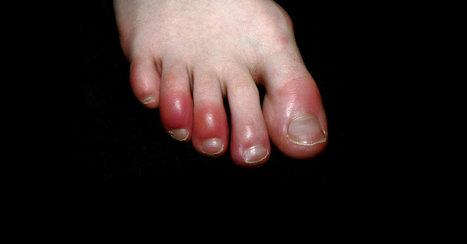Dermatologists say the lesions should prompt testing for the virus, even though many patients have no other symptoms. Before the coronavirus outbreak, Dr. Lindy Fox, a dermatologist in San Francisco, used to see four or five patients a year with chilblains — painful red or purple lesions that typically emerge on fingers or toes in the winter. Over the past few weeks, she has seen dozens. “All of a sudden, we are inundated with toes,” said Dr. Fox, who practices at the University of California, San Francisco. “I’ve got clinics filled with people coming in with new toe lesions. And it’s not people who had chilblains before — they’ve never had anything like this.”
It’s also not the time of year for chilblains, which are caused by inflammation in small blood vessels in reaction to cold or damp conditions. “Usually, we see it in the dead of winter,” Dr. Fox said. Dr. Fox is not the only one deluged with cases. In Boston, Dr. Esther Freeman, director of global health dermatology at the Massachusetts General Hospital, said her telemedicine clinic is also “completely full of toes. I had to add extra clinical sessions, just to take care of toe consults. People are very concerned.” The lesions are emerging as yet another telltale symptom of infection with the new coronavirus. The most prominent signs are a dry cough and shortness of breath, but the virus has been linked to a string of unusual and diverse effects, like mental confusion and a diminished sense of smell. Federal health officials do not include toe lesions in the list of coronavirus symptoms, but some dermatologists are pushing for a change, saying so-called Covid toe should be sufficient grounds for testing. (Covid-19 is the name of the illness caused by the coronavirus.)
Several medical papers from Spain, Belgium and Italy described a surge in complaints about painful lesions on patients’ toes, Achilles' heels and soles of the feet; whether the patients were infected was not always clear, because they were otherwise healthy and testing was limited. Most cases have been reported in children, teens and young adults, and some experts say they may reflect a healthy immune response to the virus. “The most important message to the public is not to panic — most of the patients we are seeing with these lesions are doing extremely well,” Dr. Freeman said. “They’re having what we call a benign clinical course. They’re staying home, they’re getting better, the toe lesions are going away.”...
Via Juan Lama



 Your new post is loading...
Your new post is loading...







